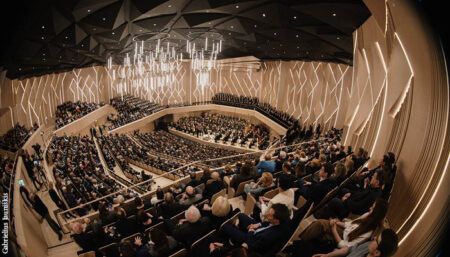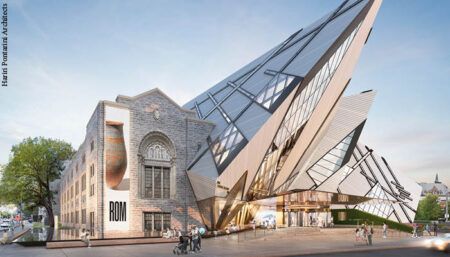Having closed for renovations in 2018, The Wharf, the home of Sydney Theatre Company (STC) in Sydney Harbour, Australia, has reopened. It is also the first theatre in New South Wales to play to a 100%-capacity audience since COVID-19 forced the closure of theatres in March 2020.
The 100-year-old timber shipping wharf at Walsh Bay was first transformed from a wool store to an award-winning theatre-making space in the 1980s. It has now been upgraded once again to improve facilities and access, modernise the theatre spaces and reflect the growth and change of STC’s business operations. The result is an entirely new facility that houses the entire theatre-making process under one roof and provides vastly improved experiences for artists, workers and audiences, while preserving the heritage details that give the venue its character.
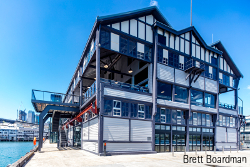
The Wharf Renewal Project was guided by consultation with theatre-makers and designers who work regularly with the company. The project was also informed by input from staff and audiences, and the expertise of specialist consultants. The latter include architect Hassell, theatre consultant Charcoalblue and heritage architect Tropman & Tropman Architects, with construction completed by Richard Crookes Construction.
The project was made possible by the support of the NSW government and private donors.
To fulfil the vision of the company’s founding artistic director, Richard Wherrett, the two theatre spaces at The Wharf are now fully flexible. There are three adjustable seating configurations and it is possible to combine the two stages. Enhancements in security, safety, operational efficiency, environmental performance and access for workers and visitors with disabilities were other key priorities for the project.

The re-building and modernisation of the two theatre spaces delivers better amenities, improved acoustic separation and full accessibility for audiences.
Wharf 1 has capacity for 350-420 people in end-on, corner and in-the-round seating configurations. Wharf 2 has capacity 160 people, with a retractable seating bank allowing for multipurpose use. The two theatres can also be combined, allowing greater depth of stage in the end-on configuration.
To improve accessibility, there are new public entries via two new lifts and the addition of two balcony extensions (gantries) off The Theatre Bar at the End of The Wharf and atrium, giving patrons direct access to the venue from the harbourside apron.
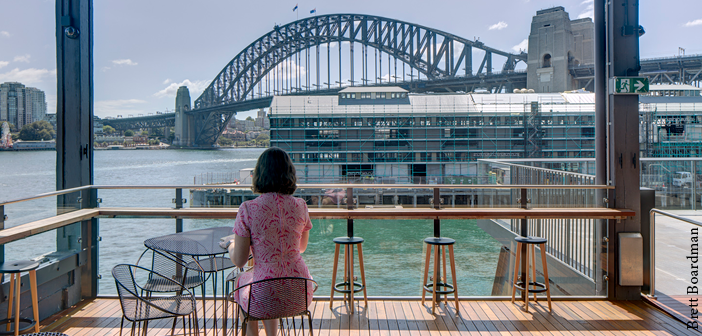
Offering views over Sydney Harbour, The Theatre Bar at the End of The Wharf now has improved kitchen facilities and a better front-of-house design allowing for more efficient service. The project also saw the addition of the Neilson Family Gallery, a multipurpose, hireable venue space overlooking The Theatre Bar at the End of the Wharf and Sydney Harbour.
Behind the scenes, the experience for artists has been improved with better dressing rooms, larger rehearsal rooms, break-out spaces, music/vocal coaching rooms and a recording booth.
In the Paradise workshop, a raised ceiling height enables larger sets to be built on-site, and there is a dedicated wig room. A new back-of-house corridor allows greater operational efficiency in moving sets from the workshop into rehearsal and theatre spaces, offering more security without needing to utilise public circulation areas.
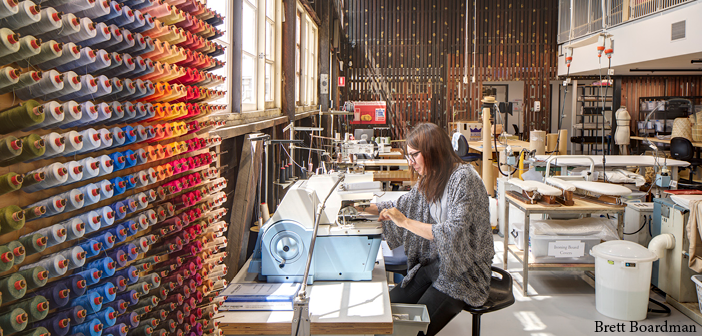
STC executive director Patrick McIntyre – who has seen the project through from conception – said renewing the premises at The Wharf was a “daunting challenge”. “Since opening as a theatre venue in the early 1980s it has become one of the city’s most loved and iconic cultural spaces,” said McIntyre. “Not only is the century-old timber pier beautiful and historically significant, but the 1983 transformation for Sydney Theatre Company (by Viv Fraser in association with NSW Government Architects) was itself an award-winning architectural work. The newest incarnation of the company’s headquarters by Hassell architect and Charcoalblue theatre consultants has pulled off a triple coup by revealing even more of the original structure and providing new and more functional theatres and workplaces while at the same time honouring and responding to the earlier work by Viv Fraser and NSW Government Architects. We couldn’t be happier with the result and we look forward to creating new memories here for artists and audiences for decades to come.”
“The Hassell team is honoured to have worked with STC over the last eight years from the initial briefing phase helping develop the all-under-one-roof philosophy, through detailed design and construction to witness its successful reopening,” said Glenn Scott, principal at Hassell. “The STC Wharf Renewal Project is a rare, culturally important, heritage project that is a huge responsibility for a design team to work on – we are delighted with the outcome, and proud that STC can continue its ground-breaking theatre at The Wharf well into the future.”
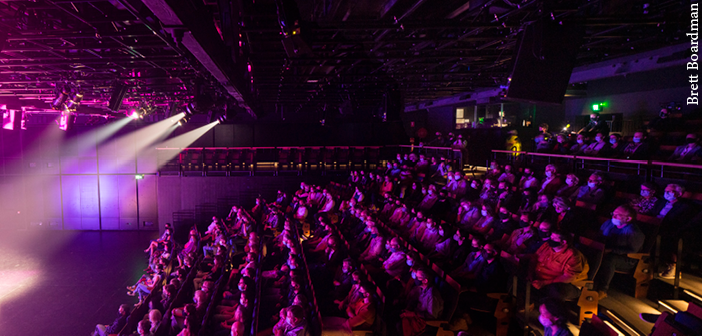
“This has always been a special project for us at Charcoalblue – it involves all the project complexities we enjoy!” said Gavin Greene, senior partner and co-founder of Charcoalblue. “A determined producing client, not afraid to challenge us and ask for the impossible; an important cultural site within the city; a wonderfully rich historic building with decades of audience and company history (plus a few ghosts!); a design brief to enable unlimited flexibility without compromise – all summed up by an aspiration to be ‘better but not different’. Charcoalblue are immensely proud of the project, it represents genuine consultation between client, architect and ourselves. We hope to have captured the spirit of the company and weaved our work within the constraints of the original Wharf to craft a series of intimate, flexible theatre spaces, improved acoustics, technical upgrades and efficient and safe working conditions, all the while respecting the unique character of this extraordinary building. The innovative design looks to the future whilst being informed by the history, which is at the heart of this building and the stories its occupants share with the audiences.”
STC’s return home to The Wharf was marked by the world premiere of Kate Mulvany’s adaptation of Ruth Park’s classic Sydney novel, Playing Beatie Bow, directed by STC artistic director Kip Williams. The story is set in The Rocks, a historic Sydney precinct that surrounds the company’s harbourside home. This production is also the first live performance in the state to play to a 100%-capacity audience, after receiving an exemption from the Public Health Order in place since the pandemic closed theatres in 2020. Playing Beatie Bow is the fifth production STC has opened since September 2020, following a six-month closure precipitated by the COVID-19 pandemic.
Photos: Brett Boardman



